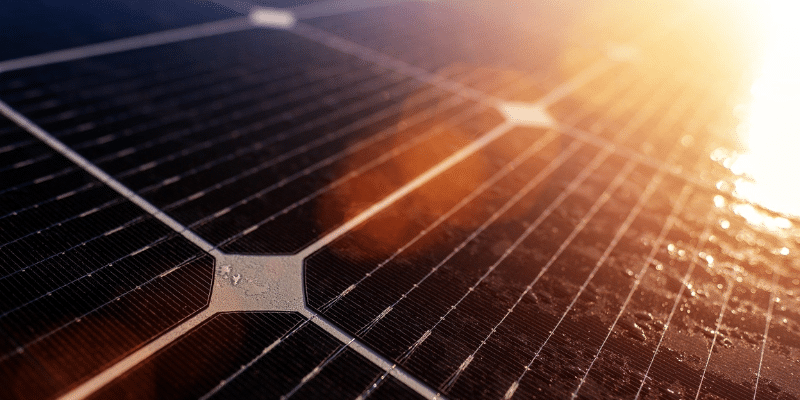In recent years, solar installations have been getting bigger and more powerful. While 5kW systems used to dominate the residential market, the average size of a solar installation in 2021 is now 6.6kW, which is generally considered the “sweet spot” for most Australians. However, there are reasons why this might be changing…
Solar installers across the country are experiencing an uptick in the purchase of 10kW solar systems. 10kW systems would usually be reserved for homeowners who expect to pay $500+ for each billing cycle. They typically have large homes with energy-intensive features like a reverse-cycle air conditioning systems or pools.
However, as the number of 10kW solar purchases continues to grow, it is becoming increasingly apparent that the future of solar power calls for greater renewable energy capacity at home for the average Australian family. There are several reasons why we can expect larger installations like these (and even bigger) to become the new norm:

Electric vehicles
The first reason has a lot do with electric vehicles (EVs). As Australia and other countries work to embrace transportation that is powered by renewable energy sources like solar, we can expect these vehicles to become more and more popular. EVs demand a lot of power – roughly 2kW of solar panels will be needed to offset the average daily power consumption of an electric car. It is unlikely that a 6.6kW residential solar system would be large enough to power a home as well as fully charge an EV; this means we will need bigger systems with greater capacity in order to meet the needs of our homes as well as those of our cars.

Battery storage
Another key reason why we can expect to see more homeowners opting for solar installations in the 10kW range is because of battery storage. More and more Australians are investing in battery storage technology in order to maximise their solar self-consumption and achieve greater independence from the grid.
We’ve mentioned this in a number of previous articles, but, if you’re considering solar panels for your home, you’ll get the most value from them by directly self-consuming the energy that they produce during daylight hours. Not only will you avoid having to purchase expensive energy from the grid, but self-consumption is worth roughly twice as much as the small credit (feed-in-tariff) you will receive for feeding it into the grid.
The larger your solar system, the more self-generated electricity you’ll have available to store and use to power your home or charge your EV at night. Even if you don’t intend to invest in a battery just yet, you can always retrofit one down the track – just make sure you have the capacity to make it worth its while!
Further renewable energy capacity
Finally, we can expect larger solar systems like these because they allow homeowners an opportunity for further renewable energy capacity. As mentioned before: EVs and battery storage both require quite a lot of energy and it’s always better to be safe than sorry. If you only purchase a system the capacity of what you currently need, your energy demands may only continue to grow. It may actually make more sense in the long run to install a larger system from day one rather than scale up later on.
Remember, modern solar panels should last around 25-30 years (sometimes longer), so it makes sense to plan ahead as Australia continues to transition to renewables.

A few potential hurdles
The first is the question of cost: larger systems with greater capacity tend to be more expensive, which can make them a tough sell for some homeowners…
On average, most Australians in 2021 pay $10,750 to install a 10kW solar system. However, the prices can go as high as $14,000 and as low as $9800 after the government rebate. This might seem steep but keep in mind that you will be saving thousands on electricity bills every year and that the system should last at least 25-30 years. Also, the price difference between an 8kW system to a 10kW system is usually negligible, so it makes sense to go larger if you can. Lastly, as battery storage becomes more affordable, the incentive to have bigger systems will only increase.
The second obstacle is the issue of roof space: not everyone has enough room for a larger solar installation. A 10kW system will require around 27 solar panels, assuming that you use 370W panels and this, of course, will take up a significant amount of space. However, this can always be fixed with creative design or mounting options! For example, you can research the option of ground or pole-mounted solar panels. If those options aren’t for you, then you can always invest in panels that offer the highest output capacity to size ratio. They will likely cost more, but will take up less roof space.
The third potential hurdle is restrictions on solar inverter size with single phase power: depending on your area, your energy distributor may restrict your system size on invertor capacity rather than solar power export. One way to get around this issue is to upgrade from single phase to three phase power, but this is quite costly.
Are you ready to go bigger?
Do you have enough roof space for a larger system and/or do you think it will be worth investing in battery storage and electric vehicles soon? If so, then an installation of around ~$11k right now may prove to be an excellent investment for you in the long run!
Either way, it seems that the future of solar power calls for greater renewable energy capacity at home best solar deals Brisbane and we can expect to see more Australian households opting for installations in the range of 10kW.
Assisting over 30,000 Australians in their transition to solar, Energy Matters can guide you toward a solar solution that fits your lifestyle and budget. Receive up to 3, obligation-free solar quotes from our trusted network of accredited solar installers in Brisbane. It’s fast, free and takes the hassle out of shopping around.












































